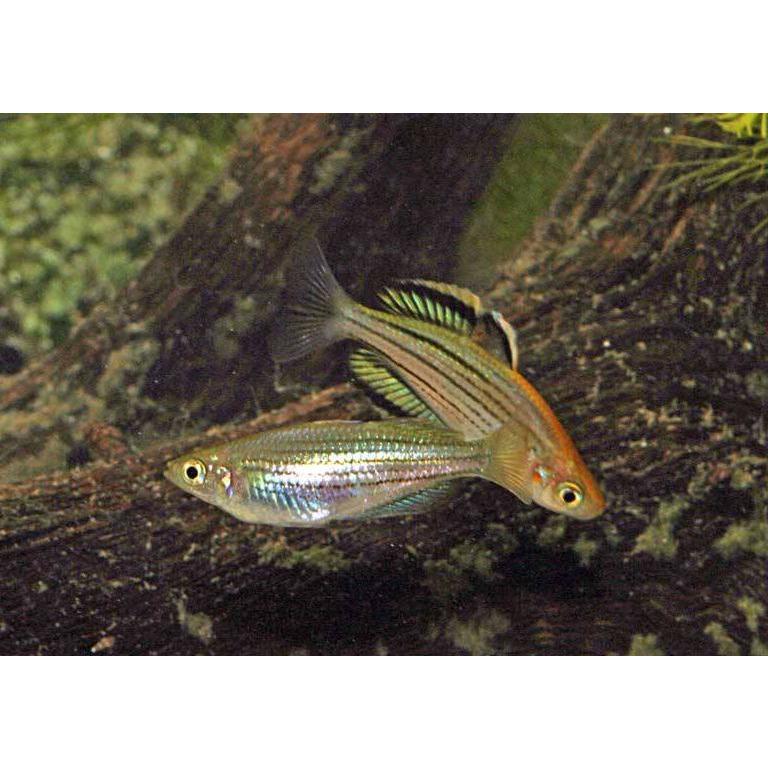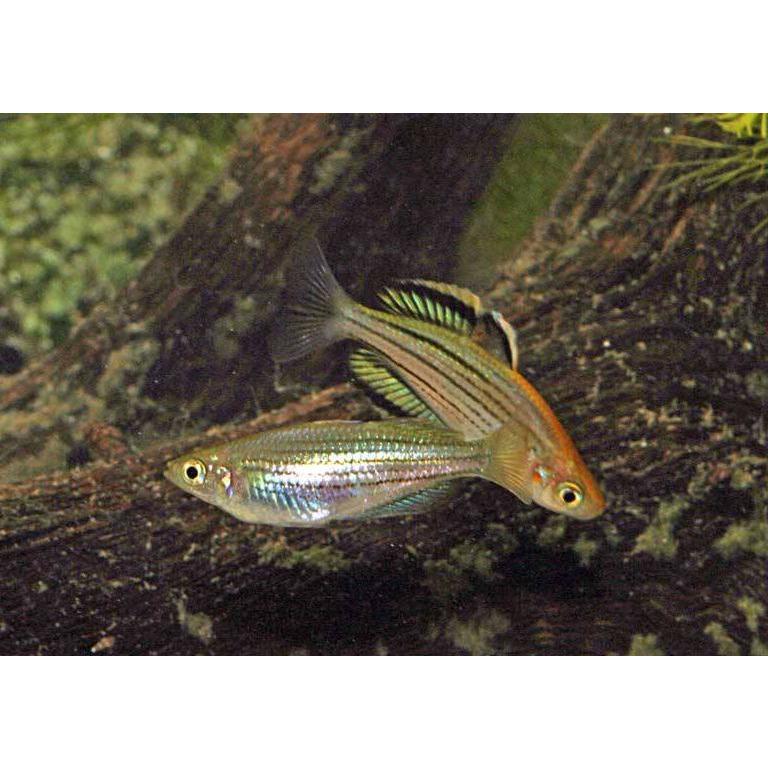Rainbowfish - McCulloch's (Melanotaenia maccullochi)
Rainbowfish - McCulloch's (Melanotaenia maccullochi)
A very small rainbowfish with several distinct colour forms across its range. McCulloch's Rainbowfish is very popular with aquarists.
Body silvery-white to yellowish, with 6-8 reddish-brown to blackish stripes along the sides. The dorsal and anal fins are variable in colour with black submarginal bands.
SKULL CREEK MCCULLOCH'S RAINBOW Species Summary Melanotaenia maccullochi were initially collected in 1915 from the Barron River, inland from Cairns, north Queensland, and described by J.D. Ogilby as Melanotaenia maccullochi. They were named after the ichthyologist, Allan R. McCulloch (1885-1925). It is therefore, according to recognised nomenclature rules, pronounced McCulloch - eye, not mac - cul - lo'kee. Melanotaenia maccullochi is another rainbowfish species that varies across its wide distributional range. Several geographically isolated populations are found in northern Queensland. Several distinct colour forms are known, which show marked variation in the intensity of the dark body stripes and markings on the dorsal and anal fins as well as differences in the colour of the 'spawning' stripe on the nape of males. This coloured nape is flashed on and off during spawning activities and may be white, yellow, orange or red. Differences between the various populations are considerable and I would not be surprised to see them separated into distinct species at some later date. Therefore, for the serious rainbowfish breeder, it is very important to maintain each distinct population separately in captivity. Male specimens of the variety found between Cairns and Innisfail are easily recognised by the silvery-white or yellowish body colour and 6-8 reddish-brown stripes on sides. The dorsal and anal fins are orange-red with a lower black margin running along the body line. The caudal fin has a fan of orange-red colouration. Females are much less colourful, though some do show a hint of the male's coloration. Females of this variety tend to grow larger and have deeper bodies than males.
Share


